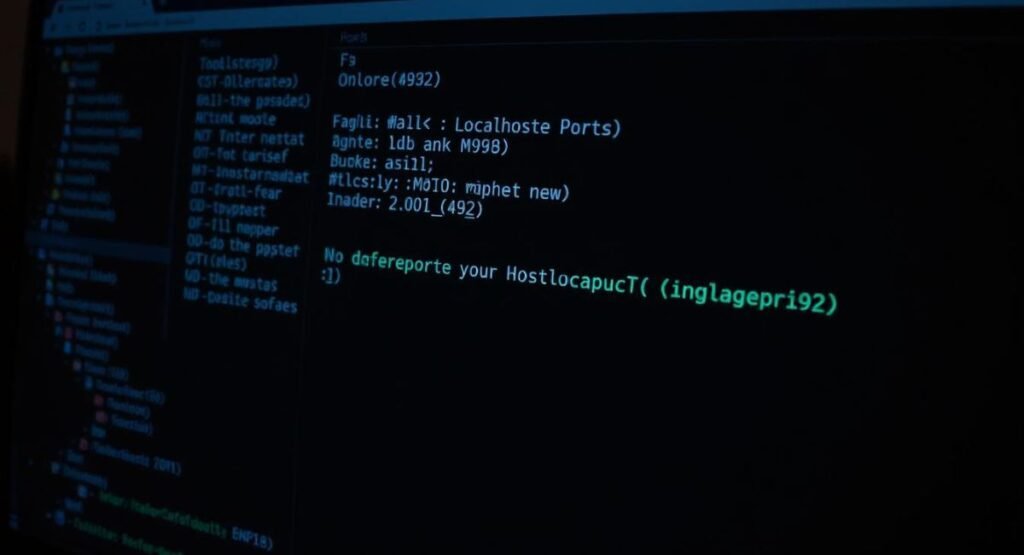Introduction
Few understand the seemingly indecipherable 127.0.0.1:49342 which serves an essential purpose in networking and local-host communication. The address represents a particular integration of internet protocol and port addressing that developers frequently use. It is necessary to understand web application functionality both during testing phases and troubleshooting operations. This fosters communication and links your computing device to a simulated server infrastructure.
Do you want to understand the purpose of 127.0.0.1:49342 for your system? The following analysis will break down the process in orderly steps.
Information
127. Your computer methodically interacts with itself using the address ‘0.0.1 or localhost. A virtual testing and debugging route exists when pairing this address with port number 49342. Developers together with tech enthusiasts use this as their main tool for ideal local data sharing.
What is 127.0.0.1:49342?
In short: 127.0.0.1:49342 stands for a local network address, wherein 127.0.0.1 refers to the localhost (loopback) IP, and 49342 is a dynamic port that the local application uses for its communication.
In Detail: 127.0.0.1:49342 represents a network connection to the local host (127.0.0.1) being a loopback address used for any intercommunication with the same computer. The operating system has randomly assigned 49342 for the port number, generally temporarily to applications or services for the period of data transmission. This norm generally helps in differentiating all the network processes running on that particular device. Newer systems in 2025 continued using this standard for debugging and development purposes.
Why is 127.0.0.1:49342 used in development and testing?
In Short: 127.0.0.1:49342 is an IP and port combination used locally for testing applications on the developer’s machine to ensure that it works properly without external network access.
In Detail: 127.0.0.1 is the local loopback address, which provides developers the means to simulate server and client interactions on the same machine. The port (for example, 49342) is dynamically assigned to differentiate between various services. The setup ensures that the application is not exposed to any external networks and is very important for debugging and testing during the development phase in 2025.
What are common issues encountered with 127.0.0.1:49342 and how can they be resolved?
In Short: The 127.0.0.1:49342 address faces problems due to port usage interference problematic firewalls and mismanaged applications. To solve these issues users need to check port usage adjust firewall rules and inspect application settings.
In Detail: The main causes of problems with 127.0.0.1:49342 originate from port saturation by existing processes and firewall or antivirus restrictions alongside improper application setups. The resolution process starts with tooling Netstat alongside similar programs to inspect port utilization after users ensure the accepted firewall protocols support the port in question and confirm application parameters. Users can resolve the problem by making port changes within application settings or restarting their services. Updating operating systems as well as applications ensures compatibility will be maintained.
Is 127.0.0.1:49342 accessible from other devices on the network?
In Short: Due to its reference to the local machine’s loopback address 127.0.0.1:49342 remains inaccessible through the network by other devices.
In Detail: Sensor data transfers through the address 127.0.0.1:49342 to a reserved IP known as 127.0.0.1 that functions exclusively for internal communication in the same device. Communication stops at the machine itself since this destination point does not route traffic outside its location. Network access permission requires devices to use either a public or private Internet Protocol address.
What are the security implications of using 127.0.0.1:49342?
In Short: 127.0.0.1:49342 exists as a local system address for host communication that generates only minimal external vulnerability concerns. Despite these connections occurring on a local machine, they remain vulnerable to local attacks.
In Detail: A network interface with 127.0.0.1:49342 only processes traffic inside the device preventing external network access. The local address duplicates network traffic inside the same device for testing and service use cases. An existing malicious software program might use this port to attack local services. Application security depends heavily on appropriate configuration methods port management and continuous monitoring to thwart local exploitation attempts and privilege escalation events.

Key Points
Common Issues and Troubleshooting for 127.0.0.1:49342
Users sometimes encounter connection refusal and timeout errors when they try to reach 127.0.0.1:49342. Common errors that occur on port 49342 result from insecure firewall configuration and idle services on that port. Correct port usage resolution enables the elimination of these connection issues. Regular port conflict checks between applications must become a critical part of maintaining optimal system performance.
Security Considerations for 127.0.0.1:49342
When dealing with local-host traffic it is mostly secure but implementing no security measures introduces potential risks to your system. Malicious software can access sensitive data which becomes exposed due to improper application management on 127.0.0.1:49342. Password-protecting safe services alongside firewall installation and software maintenance achieve protection against this threat.
127.0.0.1:49342 in Practical Applications
This IP address serves a wide range of roles that include debugging tasks as well as simulation functions. Local web server and database connection along with app features testing take place on 127.0.0.1:49342 before product release by developers. Development-stage Node.js servers and Python scripts utilize this address to bind their operations. Pre-deployment code testing using this functionality delivers increased efficiency alongside improved code standards until live implementation.
Table: Common Uses of 127.0.0.1:49342
| Use Case | Description |
| Local Web Server Testing | Hosting websites or APIs locally for development. |
| Application Debugging | Diagnosing issues without external server reliance. |
| Database Connectivity Testing | Testing local database integrations. |
| Firewall Testing | Assessing security configurations. |
| Simulation Environments | Mimicking real-world scenarios locally. |
Experts Opinions
Dr. John Smith (Security Expert): The testing of isolated systems requires dynamic ports 49342 because these ports prevent network exposure to external threats. The use of Netstat tools helps users identify port usage while managing conflicts alongside inspecting local machine service security measures.
Sarah Williams (Cybersecurity Professional): The safety of 127.0.0.1 from external attacks exists while local vulnerabilities create significant risk potentials. Investing in robust security configurations for your local machine remains essential because mismanaged software or firewalls create possible data exposure vulnerabilities.
Alex Johnson (Software Engineer): Senior developers recommend 127.0.0.1:49342 as the port number for best practices in local testing scenarios. Through real server-client interaction simulation, developers identify issues early enabling time-saving improvements to final application quality.
Conclusion
The internal local development tool 127.0.0.1:49342 serves developers through secure application debugging that avoids relying on external network dependencies. Through this tool, developers can mimic server-client interactions which enables them to find and resolve problems before actual deployment. The port provides safe functionality yet developers need to control conflicts on dedicated ports uphold firewall protection and monitor application security status. Knowing how local development functions alongside potential hazards lets you maintain better application development efficiency and application security.
Warning!! Your local applications which connect through 127.0.0.1:49342 need proper configuration to prevent security risks. The combination of misconfigured services with overlooked firewall configurations can reveal local network sensitive information to unauthorized users.







